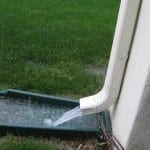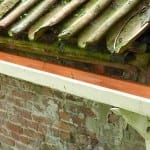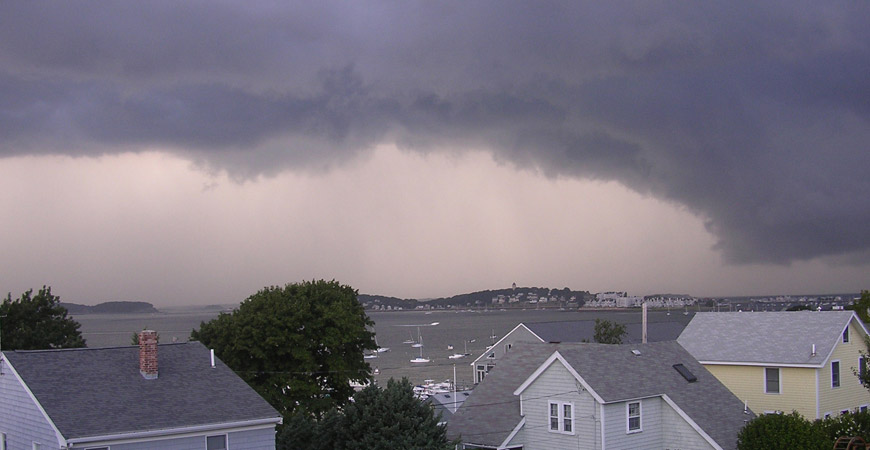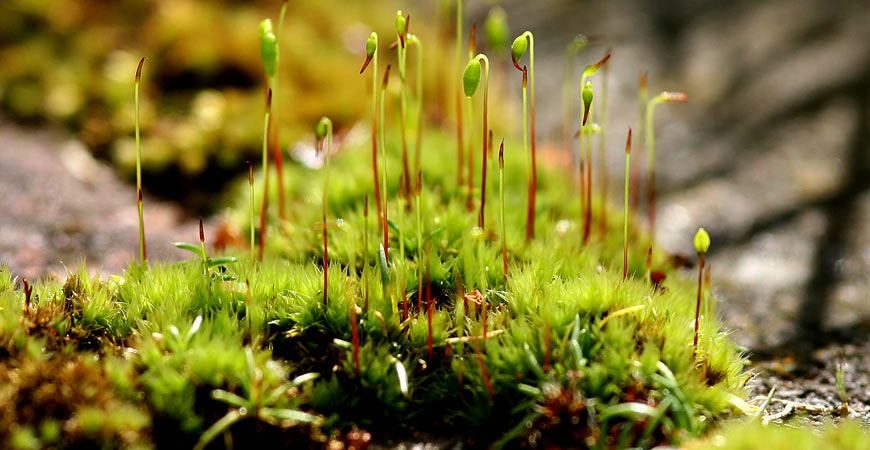
Prevent Water Damage with this Can’t-Miss Spring Rain Gutter Checklist
Your rain gutters help prevent water damage, keep it out of your basement, and protect your home’s foundation from cracking. But they can’t do their job if they’re damaged, sagging, or clogged with debris.
This essential checklist gives you the rundown on how to clean, inspect and repair your rain gutters and downspouts, and protect your home from all those spring showers!
Read on to learn more.
Tips for Cleaning your Rain Gutters
Your rain gutters play a crucial role in protecting your home’s foundation. If your rain gutters aren’t working properly, water can pool around your home’s foundation and lead to cracking, which can be extremely costly and even threaten your home’s structural integrity.
Your rain gutters can’t do their job if they’re clogged with debris, so The Foundation Repair Association recommends cleaning them at least twice a year, in the spring and fall, and more often if you have trees next to your home.
Now’s the time! Here’s how.
You’ll need:
- A tall, stable ladder
- Something to scoop out debris with. A small, plastic scoop is best, such as a child’s toy shovel or a plastic scoop specifically made for cleaning gutters. You can also use a small metal gardening trowel, but you’ll need to be careful not to scratch or damage your rain gutters.
- Thick gloves to protect your hands
- A bucket for debris
- A tarp to protect the ground below (optional)
- A garden hose
- Safety goggles
Directions:
- Remove any debris from your roof before you clean your rain gutters, or else it will end up in your gutters after the next big storm.
- Place the ladder on a flat, secure surface. If you have to lean the ladder against the rain gutter, put a 2 X 4 inside the gutter first to give it support. Make sure you’re in a safe, steady position on the ladder before you start cleaning your gutters. Never stand on the top two rungs of the ladder.
- Scoop the loose debris out of the rain gutters. You can put the debris in the bucket or drop it onto the tarp to make it quicker to clean up afterward.
- Use the garden hose on its high-pressure setting to blast any remaining debris out of the gutters. Start at the end and work your way towards the downspout. It’s a good idea to wear safety goggles during this step.
- If the water isn’t draining freely through the downspout, blast it out with the garden hose. If this doesn’t work, you have a more severe clog and will need to clear it with a small plumber’s augur.
Note: If you don’t feel safe climbing a ladder, call in a professional to clean your gutter. It’s also a good idea to call a professional if you have a multi-story home.
Tips for Inspecting your Rain Gutters
Now that you’ve cleared out the debris, it’s important to check your gutters for any issues to prevent water damage. Leaks can allow water to go where it shouldn’t be, and it’s also common for the spikes that secure your gutters to your home to come loose.
If your rain gutters don’t have the proper slope, water can pool in spots and run over the sides, causing water to pool around your home’s foundation and create a leaky basement, crawl space, or a cracked foundation.
The Foundation Repair Association Recommends inspecting your rain gutters at least twice a year, and right after you clean them is a perfect time. Here’s how:
- Check your rain gutters for any cracks or holes. Check the surface of the gutter itself, as well as the seams.
- Look for any signs of rust in your rain gutters.
- Check all the spikes that secure the gutters to your home to see if any are loose or missing.
- Inspect the downspouts. Make sure they haven’t come loose from the side of your home, check for any missing rivets, peeling paint, or rust, and make sure the elbows haven’t come loose.
- Stand back and look at your gutters to check for any areas that look bent or warped.
- Check the slope of your rain gutters. To do this, stand at the far end and slowly pour water into the rain gutter. The slope is too shallow if the water drains slowly or pools in any spots. Rain gutters should have a vertical drop of at least 1 inch for every 8 feet of gutter length.
Tips for Repairing your Rain Gutters
Now that you’ve identified any problems with your rain gutters and downspouts, some tips for fixing them to prevent water damage are below.
- To repair cracks, scrape away old caulking and seal the crack with new bead silicon sealing. You can use roofing cement to patch small holes in your gutters.
- If your rain gutters have rusted, consider replacing them. If that’s not in your budget, sand away any rusted areas, prime them, and paint them with rust-inhibiting paint.
- Replace any loose or missing gutter spikes. Click here for details.
- Replace any rusted sections of the downspout and reattach any loose ones. Use a rivet gun to replace missing rivets in your downspouts. The Foundation Repair Association recommends that the water from downspouts be released no less than 5 feet from your home’s foundation, so add necessary downspout extenders. Add a splash block below your downspout if you don’t have one. If you notice your downspouts severely clog, you can install a screen at the top to keep debris out and prevent this problem.
- If you saw any dips in your rain gutters, add more supports where necessary.
- Add or adjust the gutter supports, where necessary, to fix the slope.
Sometimes ugly growths such as green or black algae can appear on the sides of your rain gutters or downspouts. If that happens, eliminate growth safely and easily with Wet & Forget Outdoor!
Wet & Forget Outdoor:
It eliminates the worry and hassles you get with bleach or pressure washing. It won’t knock your gutters or downspouts loose as pressure washing can, and there’s no muddy mess.
And unlike bleach, Wet & Forget Outdoor gets the job done with no scrubbing needed, and the runoff won’t kill your lawn or corrode your downspouts.
Wet & Forget Outdoor wipes out algae, moss, lichen, mold and mildew and keeps them away for a year or more with no elbow grease. Just spray and leave!
This is one step to prevent water damage that will be a cinch.
Photos courtesy of Derek Bridges, Paul L. Dineen, State Farm, and Sean Thornton.














